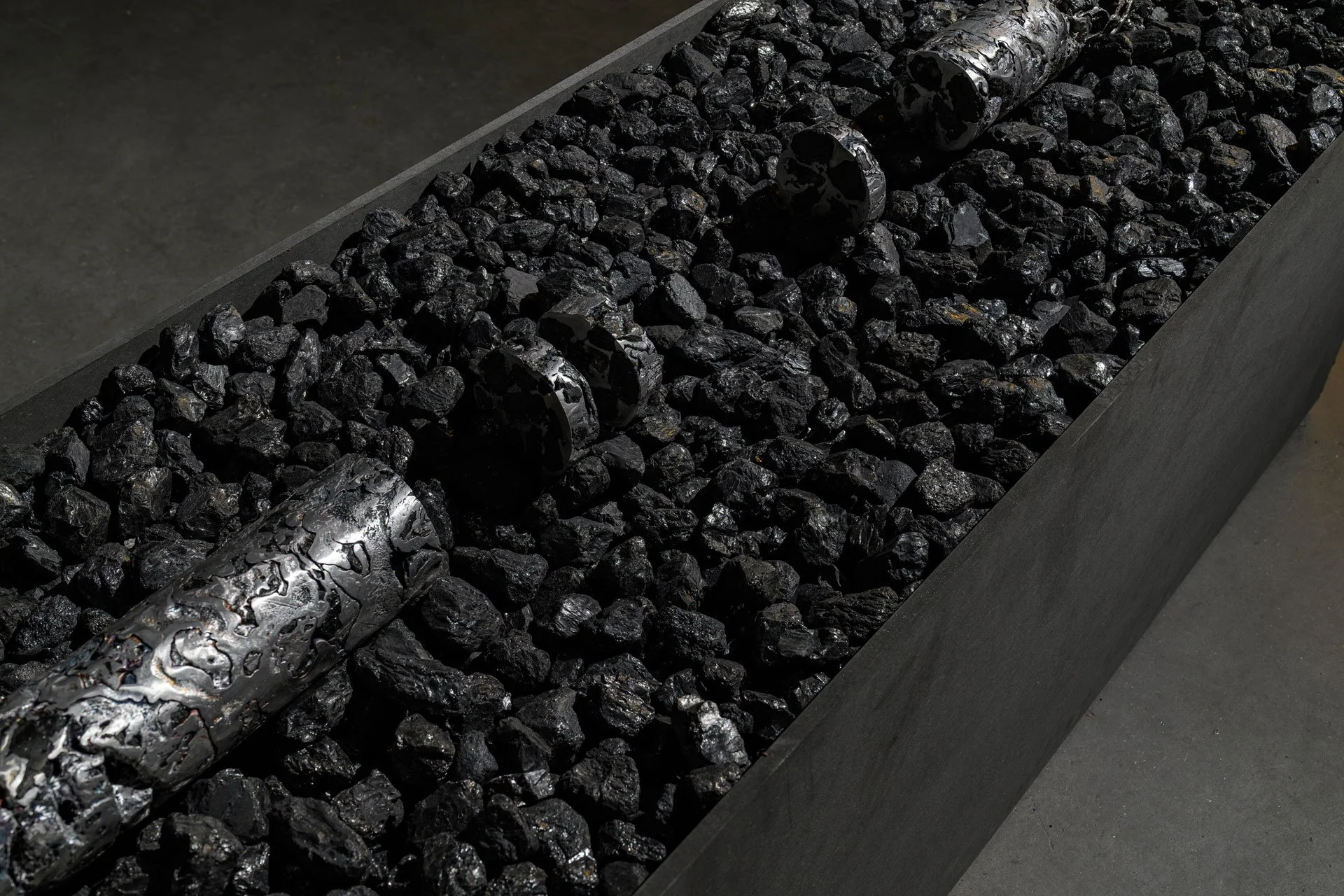
How Can We Care for Coal: Reflections on Hedwich Rooks’ “PetrifiCāre”
In line with FIBER Festival’s 2024 theme of Outer/Body, Prochaska explores the fluidity of bodily boundaries and the dynamic interplay between body, identity, and environment.
Hedwich Rooks, PetrifiCāre, presented at the Outer/Body exhibition during FIBER Festival 2024.
Photo credit: Pieter Kers
Coal. A substance formed from plant matter that decayed millions of years ago is now the second most consumed fossil fuel in the world. It lies at the core of modernity, having powered the technological developments that have deeply shaped our human experience y. Through the central role that coal has played within these processes, however, our abundant (ab)use of it has also led to far-reaching environmental degradation. With her artwork PetrifiCāre, shown for the first time during FIBER Festival 2024, Hedwich Rooks invites us to reflect on how we could move from this sabotaging relationship we have with coal to a more caring one.
The artwork features two sculptures made of coal and a circular screen surrounded by a ring of light. The screen displays various coal formations as they are scanned. I was particularly captivated by the piece’s futuristic design incorporating both ancient carbon with a sleek, modern aesthetic. Watching the scanner methodically move across the screen, revealing different forms of coal had an unexpectedly meditative effect on me.
The idea for this artwork emerged during Rook's residency at Zeche Zollverein, one of the world’s largest historic coal mines, now decommissioned. Through a series of documented chemical analyses and scanning tests, she sought to uncover coal’s agency and composition. Her work at Zollverein became a journey into the depths of coal’s existence, revealing the untold connections between the past, present, and future. Rooks employed advanced healthcare imaging technology, such as MRI and micro-CT scans, to examine the internal pore structure of coal. This approach allowed her to become sensitive to the bodies affected by human use of coal—those of the past, whose organic matter transformed into coal; those of the present, who rely on its energy; and those of the future, who will inherit the consequences of its consumption. Paradoxically, the aluminum-intensive machinery used in her scans was itself a product of the same energy source it was now investigating, highlighting the interdependence of modern technology and ancient carbon.
Her exploration led her to the creation of PetrifiCāre, derived from the Latin term petrificāre meaning ‘to harden organic matter by depositing dissolved minerals.’ By capitalising the "C" in Cāre, Rooks invites us to consider the notion of 'care' for coal and other earth materials, emphasizing our interconnectedness with life forms across vast temporal scales. PetrifiCāre can be seen as an arrangement of relationships to the spirit of past carbon existence, illustrating how the transformation and healing of other materials and bodies are made possible through this process. With her artwork, Rooks invites us to reflect on what a notion of care for coal can look like on an ecological, chemical, and social level.
Hedwich Rooks, PetrifiCāre, presented at the Outer/Body exhibition during FIBER Festival 2024.
Photo credit: Pieter Kers
Ecological Dimension: The Deep Time Connection
The story of coal begins in the verdant swamps of the Carboniferous period, around 300 million years ago. Towering ferns and ancient trees, now long extinct, thrived in a warm, humid climate. As these plants died, they fell into waterlogged environments, where the lack of oxygen slowed their decomposition. Over millions of years, layers of plant material accumulated, eventually transforming into peat. The pressure of overlying sediments and the heat from the Earth’s core then metamorphosed this peat into coal.
This transformation is the essence of PetrifiCāre. Originating from organic material hardened by minerals over eons, coal is a testament to deep time and the interconnectedness of life. When we burn coal, we release carbon that was sequestered millions of years ago, bridging epochs and ecosystems. This cycle underscores the responsibility we bear: to care for the balance of the biosphere, to recognize the impact of our actions on future generations, and to honor the ancient life forms from which this resource originated.
Chemical Dimension: The Alchemy of Coal
Coal is a marvel of nature’s alchemy. It is primarily composed of carbon, but also contains varying amounts of hydrogen, sulfur, oxygen and nitrogen.The gradual metamorphosis of plant matter also known as coalification involves a complex interplay of geological and biochemical processes. As this material is buried, subjected to heat and pressure, its chemical composition changes, water is expelled and volatile compounds are released, transforming into a more carbon-rich substance. This conversion is not merely a physical change but a chemical dance spanning eons.
PetrifiCāre in the chemical sense speaks to the processes that transform simple organic matter into an energy source. Coal is a valuable resource, due to its chemical complexity, but also a challenging one. While burning coal does release energy it also releases pollutants such as sulfur dioxides, nitrogen oxides and carbon dioxide, which contribute to environmental degradation and climate change. Caring for coal on a chemical level, thus, extends beyond the substance's compounds to caring for the environment on a broader level. Here, the concept of Cāre implores us to innovate cleaner technologies, and to seek sustainable alternatives that respect the chemical balances of our environment.
Social Dimension: The Human Element
Our societies have been profoundly shaped by coal. From the Industrial Revolution, which was powered by coal, to the present day, coal has been a cornerstone of economic development. Entire communities have been built around coal mines, and countless lives have been intertwined with its extraction and use. Yet, this legacy is double-edged. While coal has fueled progress, it has also wrought environmental destruction, health crises, and economic disparity.
The social dimension of PetrifiCāre asks us to consider the human costs of coal and our social relationship with coal. Mining communities often suffer from poor working conditions, health issues related to coal dust and pollution, and economic instability as coal reserves dwindle or as society shifts towards cleaner energy sources. The C in Cāre urges us to support these communities, to invest in their health and economic diversification, and to ensure a just transition to a sustainable energy future. It reminds us that the benefits of coal have come at a human cost and that caring for coal means caring for those whose lives have been built upon it.
Conclusion
The story of coal, as told through the lens of PetrifiCāre, is one of transformation, interconnection, and responsibility. It is a material that connects us to the deep past, challenges us with its chemical complexities, and demands compassion for the lives it touches. PetrifiCāre demonstrates the power of art to bridge the past and future, and urges us to reconsider our relationship with the materials that shape our world. Honouring the interconnectedness that binds us all across the eons, it challenges us to care for the Earth and its myriad forms of life — human and more-than-human. As we navigate the challenges of the 21st century, we ought to remember the lessons of PetrifiCāre. Let us honour the ancient life forms that became coal, mitigate the environmental impacts of its use, and care for the communities that depend on it. By embracing this holistic perspective, we can forge a future that respects the interdependence of all life forms across different time scales and fosters a sustainable relationship with our planet.
Read more

ABOUT THINKING BODIES
Thinking Bodies was conceptualised as an effort to build an exploratory body of knowledge(s), that draws upon the festival’s theme and weaves together perspectives, writing styles and formats. Drawing from the theme of the FIBER Festival 2024 edition, Outer/Body, we invited aspiring and emerging writers from a multiplicity of backgrounds to share their contributions, ranging from essays to interviews to poetry, resulting in a rich archive of knowledge.
























